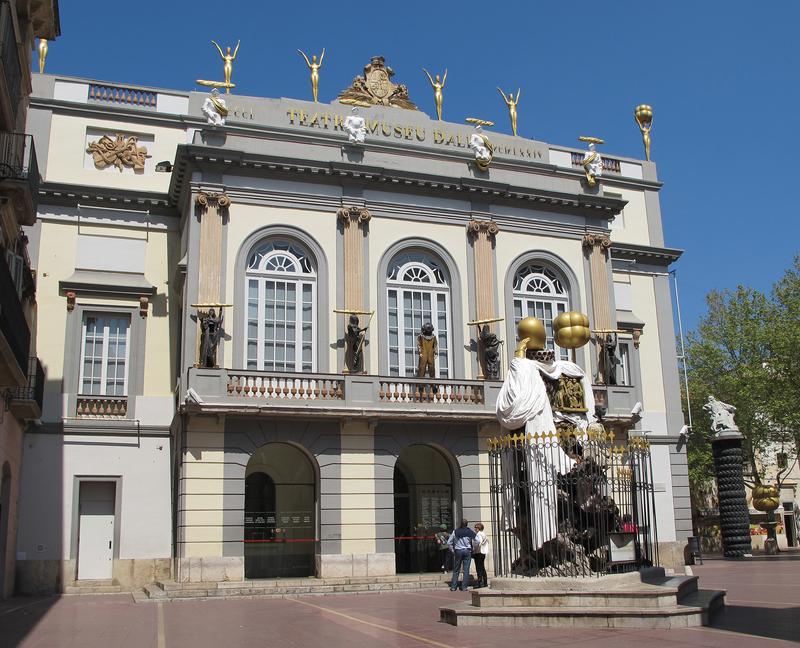Salvador Dalí: Catalonia's surrealist genius still inspires 120 years on
Painter's museum in hometown Figueres is one of Spain's most visited

Saturday, May 11, marks the 120th anniversary of the birth of Salvador Dalí, Catalonia's most prolific painter.
Known for his endless creativity and surreal vision, Dalí left a profound mark on the art world, producing over 1,500 paintings during his prolific career.
But his impact transcends mere numbers: Dalí became a cultural icon and inspiration not only to his contemporaries but also for future generations.
The surrealist genius captivates audiences to this day, and his museum in his hometown of Figueres is one of the 100 most visited museums in the world.
Dalí's early life: a Greek tragedy
Dalí was born on May 11, 1904, but his life began two years before his birth. He was named Salvador after his older brother, who died nine months before his birth.
This event deeply marked Dalí's childhood, as he thought he was a replica of him, or even a reincarnation.
He had a personality crisis throughout his childhood and began to behave eccentrically. Perhaps this is how he became the Dalí we know.
A tumultuous relationship with his father
Parental relationships have served as inspiration for many artists, and Salvador Dalí was no exception. His father, also named Salvador, was a strict authoritarian who worked as a notary and lawyer.
Their relationship was tumultuous, marked by several disputes throughout the end of his father's life. In fact, his father changed his will eight times because of their on-and-off relationship.
One aspect of his son’s life that Salvador senior vehemently disapproved of was Dalí's marriage to Gala, as she was divorced.
Another major conflict arose when Dalí exhibited a Sacred Heart in Paris with the inscription "Sometimes I spit on my mother's portrait for fun," which angered his father so much that he disowned his son and forbade him to return to Cadaqués.
Despite this, Dalí visited him and provocatively handed him a condom filled with his own semen, declaring, "Here. I owe you nothing anymore."
The artist also had strong feelings of anger toward his father, especially after his mother's death, when his father married his late wife's sister only a year later.
'The hardest blow of my life'
Dalí had a particularly close relationship with his mother, Felipa Domènech. Her death in 1921, when he was just 16 years old, deeply affected him, as he later expressed that her passing was the hardest blow he had ever suffered.
After his mother's death, Dalí moved to Madrid to study fine arts. Despite his father's strict manner, he allowed Dalí to pursue his artistic goals on the condition that he attend the Madrid School of Fine Arts and obtain a teaching degree.
During his time in Madrid, Dalí lived in the students’ residence, a center of cultural expression and experimentation in Spain at the time.
Here he formed important friendships with poet Federico García Lorca and filmmaker Luis Buñuel. It was during this time that Dalí began to show eccentric tendencies, often dressing in the style of a Victorian artist.
1930s-1940s: Dalí finds his style
After being expelled from the Madrid School of Fine Arts for declaring the tribunal that was to evaluate him "incompetent," Dalí embarked on a journey of artistic independence.
He began holding exhibitions in both Madrid and Barcelona, before immersing himself in several years of intense painting in Figueres. Finally, he made the crucial decision to move to Paris.
In the early 1930s, Dalí presented his first solo exhibition in Paris, which included The Persistence of Memory, the iconic work depicting melting clocks.
By this time, Dalí had firmly established the distinctive style and artistic language that would define his work.
Dalí's surrealist legacy
When you hear the word surrealism, Salvador Dalí is almost certainly one of the first names to come to mind. The Catalan artist had a profound influence on one of the 20th century’s major art movements.
Surrealism, a movement that emerged in the early part of the last century, sought to channel the unconscious as a means of unlocking the mysteries of human existence.
Dalí embraced this philosophy with passion, filling his paintings with dreamlike imagery, distorted perspectives, and irrational juxtapositions.
Through his exploration of the subconscious, Dalí challenged social norms and conventions, inviting viewers to question the nature of reality and the limits of perception.
His paintings often contain symbolic motifs such as melting clocks, distorted figures, and barren landscapes that serve as windows into the inner workings of the psyche.
He developed his own technique, the paranoiac-critical method, which allowed him to create art that blurred the lines between reality and illusion, tapping into the subconscious to reveal hidden meanings and interpretations.
His methodical approach, coupled with his limitless imagination, produced a body of work that continues to fascinate and provoke thought to this day.
To learn more about Salvador Dalí's life, listen to the latest episode of our podcast Filling the Sink.